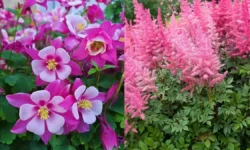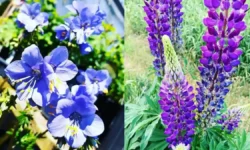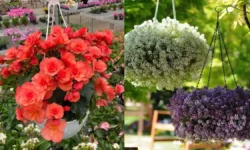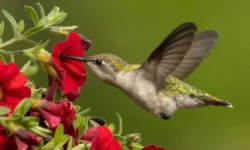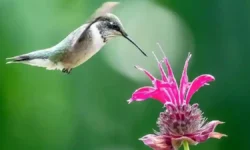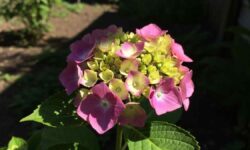Indoor plants bring life, color, and freshness to any living space. Whether you have a few pots on a windowsill or a lush indoor garden, providing proper nutrients is essential for their growth and vitality. Fertilizing indoor plants is a crucial part of plant care that many overlook or misunderstand. Knowing how to fertilize, when to fertilize, and what types of fertilizers to use can make a significant difference in your plants’ health and development.
This comprehensive guide will walk you through the essential aspects of fertilizing indoor plants to ensure they thrive year-round.
Table of Contents
Why Fertilizing Indoor Plants Is Important
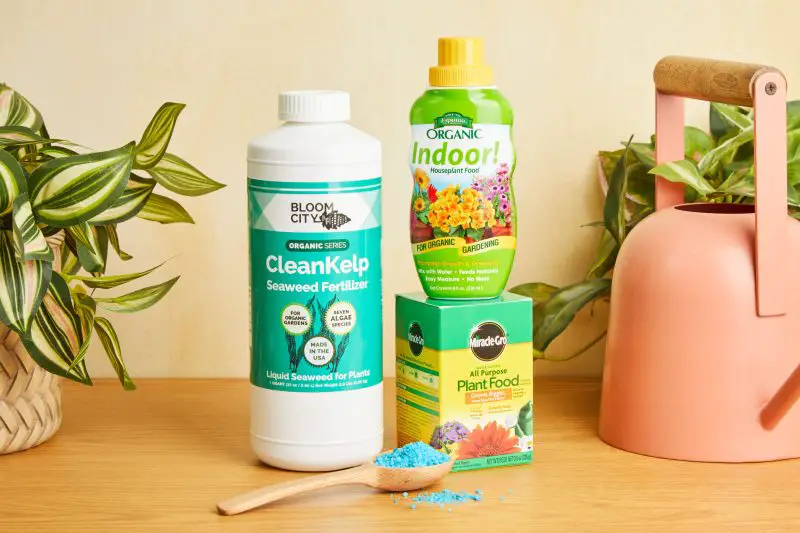
Indoor plants rely heavily on the nutrients available in their potting soil, but these nutrients deplete over time as plants absorb them for growth. Unlike outdoor plants, which have access to a large volume of natural soil and organic matter, potted plants are confined to a limited amount of soil. As a result, replenishing nutrients through fertilization is necessary to maintain healthy growth.
Fertilizing helps replace the essential elements plants need, including nitrogen, phosphorus, and potassium, along with trace minerals. Without proper fertilization, plants can suffer from nutrient deficiencies, leading to stunted growth, pale or yellowing leaves, weak stems, and poor flowering or fruiting. Thus, feeding indoor plants appropriately supports vigorous foliage, vibrant blooms, and stronger root systems.
Understanding Plant Nutrient Needs
Plants require a balanced mix of macronutrients and micronutrients to carry out vital functions. The three primary macronutrients found in most fertilizers are nitrogen (N), phosphorus (P), and potassium (K). Each of these plays a distinct role in plant development.
Nitrogen encourages lush, green leaf growth, making it especially important for foliage plants. Phosphorus supports root development and is critical for flowering and fruit production. Potassium helps plants build resilience against diseases and stress, contributing to overall health.
In addition to these, plants need secondary nutrients like calcium, magnesium, and sulfur, and trace elements such as iron, manganese, zinc, copper, molybdenum, and boron. Although these are required in smaller amounts, they are essential for various physiological processes.
Choosing the right fertilizer involves understanding these nutrient needs and tailoring them to the specific types of indoor plants you grow. For example, flowering plants might require higher phosphorus, while leafy greens benefit from more nitrogen.
How to Fertilize Indoor Plants Correctly
Proper fertilization is more than just adding fertilizer to the soil; it requires understanding the concentration, frequency, and method of application to avoid damaging your plants.
First, always dilute liquid fertilizers according to the package instructions. Indoor plants are more sensitive to fertilizer burn because their roots are confined to pots. Over-fertilizing can lead to salt buildup in the soil, causing root damage and leaf burn.
When applying granular fertilizers, scatter them evenly on the soil surface and water thoroughly afterward to help nutrients penetrate the root zone. Avoid placing fertilizer directly against the stem to prevent chemical burns.
Another method gaining popularity is foliar feeding, which involves spraying a diluted nutrient solution directly onto the leaves. This allows plants to absorb nutrients quickly, especially micronutrients, and can be useful when plants show deficiency symptoms.
Regular monitoring of your plants for signs of nutrient stress will help you adjust fertilization practices accordingly. Healthy growth, vibrant color, and consistent blooming are good indicators that your fertilizing routine is effective.
When Is the Best Time to Fertilize Indoor Plants?
Timing is a key factor in fertilizing indoor plants effectively. Most plants enter a growth phase during the warmer months, typically spring and summer, when they can make the best use of added nutrients.
Fertilizing during the active growing season encourages robust leaf development, stronger roots, and prolific flowering or fruiting. Conversely, during fall and winter, many indoor plants enter a period of dormancy or slowed growth. Fertilizing during this time may not be necessary and could even harm the plants by stimulating growth when they are resting.
The frequency of fertilization depends on the plant species, pot size, soil type, and fertilizer used. Generally, feeding every two to four weeks during active growth is sufficient for most indoor plants.
Observing your plants’ growth cycle and adjusting your fertilizing schedule accordingly will promote healthier development and prevent nutrient overload.
Choosing the Right Fertilizer for Your Indoor Plants
There is a wide range of fertilizers available on the market, each formulated to address different plant needs. Selecting the right type of fertilizer is essential to provide your indoor plants with the nutrients they require.
Liquid fertilizers are popular for indoor gardening because they are easy to apply and fast-acting. They can be diluted and applied with watering, ensuring nutrients reach the roots quickly. Many liquid fertilizers come as balanced N-P-K formulas or are specially designed for flowering or foliage plants.
Granular fertilizers release nutrients slowly over time, providing a steady supply of nutrition. These are often mixed into the soil or sprinkled on the surface and watered in. They require less frequent application but may take longer to show results.
Organic fertilizers derived from natural materials like compost, worm castings, seaweed, or fish emulsion are favored by those seeking an eco-friendly approach. Organic options improve soil structure and microbial activity, enhancing plant health beyond just nutrient supply.
Synthetic or chemical fertilizers offer precise nutrient ratios and rapid effects but can sometimes cause salt buildup and harm soil biology if overused.
Understanding the pros and cons of each fertilizer type will help you choose the best option for your plants and gardening style.
Adjusting Fertilizer Based on Plant Type
Different indoor plants have varying nutritional demands. For instance, tropical foliage plants like philodendrons and monsteras thrive with higher nitrogen content, promoting lush leaves. Flowering plants such as African violets and orchids often benefit from fertilizers higher in phosphorus to support blooms.
Succulents and cacti have adapted to nutrient-poor environments and require minimal feeding. Over-fertilizing these plants can cause leggy growth and root issues.
Herbs and edible plants grown indoors may require more frequent feeding to maintain flavor and productivity but should be fertilized with food-safe products.
Knowing the specific needs of your indoor plants helps prevent underfeeding or overfeeding, ensuring they grow strong and beautiful.
Signs Your Indoor Plants Need Fertilizer
Identifying nutrient deficiency in indoor plants can be subtle but critical for timely intervention. Common signs include pale or yellowing leaves, especially older leaves; stunted growth; weak or thin stems; and reduced flowering.
If new leaves are smaller than usual or discolored, it may indicate a lack of essential nutrients. Brown leaf tips or edges can also signal fertilizer imbalance or salt buildup.
However, some symptoms overlap with other issues like watering problems or pests, so careful observation and diagnosis are essential before applying fertilizer.
Routine fertilization combined with attentive care helps prevent these problems and keeps plants thriving.
Common Mistakes to Avoid When Fertilizing Indoor Plants
While fertilizing is beneficial, improper practices can harm your plants. One frequent mistake is over-fertilizing, which can cause fertilizer burn, root damage, and even plant death. Signs of over-fertilization include leaf scorch, crusty soil, and wilting.
Another error is fertilizing too often or during the plant’s dormant period. This can disrupt the natural growth cycle and stress the plant.
Using the wrong type of fertilizer or an imbalanced nutrient formula can lead to deficiencies or excesses of certain nutrients.
Not flushing pots occasionally to wash out salt buildup is another oversight that affects soil health and plant roots.
By following proper fertilizing guidelines and understanding your plants’ needs, you can avoid these pitfalls.
Tips for Maintaining Healthy Indoor Plants Beyond Fertilizing
Fertilizer is just one part of indoor plant care. Providing adequate light, appropriate watering, and good air circulation are equally important. Use high-quality potting soil that drains well and repot plants as needed to refresh nutrients and accommodate growth.
Monitoring humidity levels is crucial for many tropical plants that thrive in moist environments. Additionally, pruning dead or yellow leaves encourages new growth and prevents disease.
Combining balanced fertilization with comprehensive plant care will ensure your indoor garden remains vibrant and flourishing.
FAQs about Fertilizing Indoor Plants
How often should I fertilize my indoor plants?
Most indoor plants benefit from fertilizing every two to four weeks during their active growing season, typically spring through summer. During fall and winter, reduce or pause fertilization as plants enter dormancy.
Can I over-fertilize indoor plants?
Yes, over-fertilizing can cause fertilizer burn, damaging roots and leaves. Always follow the recommended dosage and dilute liquid fertilizers properly to avoid harming your plants.
What type of fertilizer is best for indoor plants?
Liquid fertilizers are popular for their ease of use and fast action, while granular fertilizers provide slow-release nutrients. Organic fertilizers improve soil health naturally. Choose based on your plant’s needs and your preference.
Should I fertilize all indoor plants the same way?
No, different plants have different nutrient requirements. Flowering plants usually need more phosphorus, while leafy plants benefit from higher nitrogen. Succulents require minimal fertilizing.
Can I use outdoor plant fertilizers for indoor plants?
Some outdoor fertilizers can be too strong for indoor plants and cause damage. It’s best to use fertilizers formulated specifically for indoor plants or houseplants.
Conclusion
Fertilizing indoor plants correctly is vital for their growth, health, and beauty. Understanding why fertilization is necessary, how and when to apply fertilizers, and selecting the right types tailored to your plants’ needs will help you nurture thriving greenery inside your home.
By avoiding common mistakes and paying attention to your plants’ signals, you can provide the nutrients they need without risking damage. When combined with proper watering, lighting, and general care, fertilization ensures your indoor plants remain lush, vibrant, and full of life throughout the year.
Taking the time to learn and apply the right fertilizing practices transforms indoor gardening from a hobby into a rewarding experience that brings joy and natural beauty to your living space.

